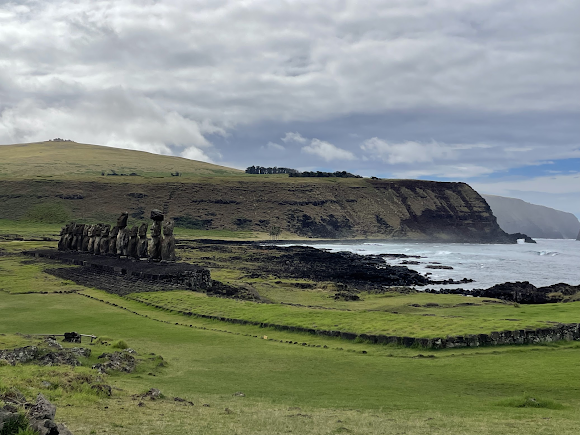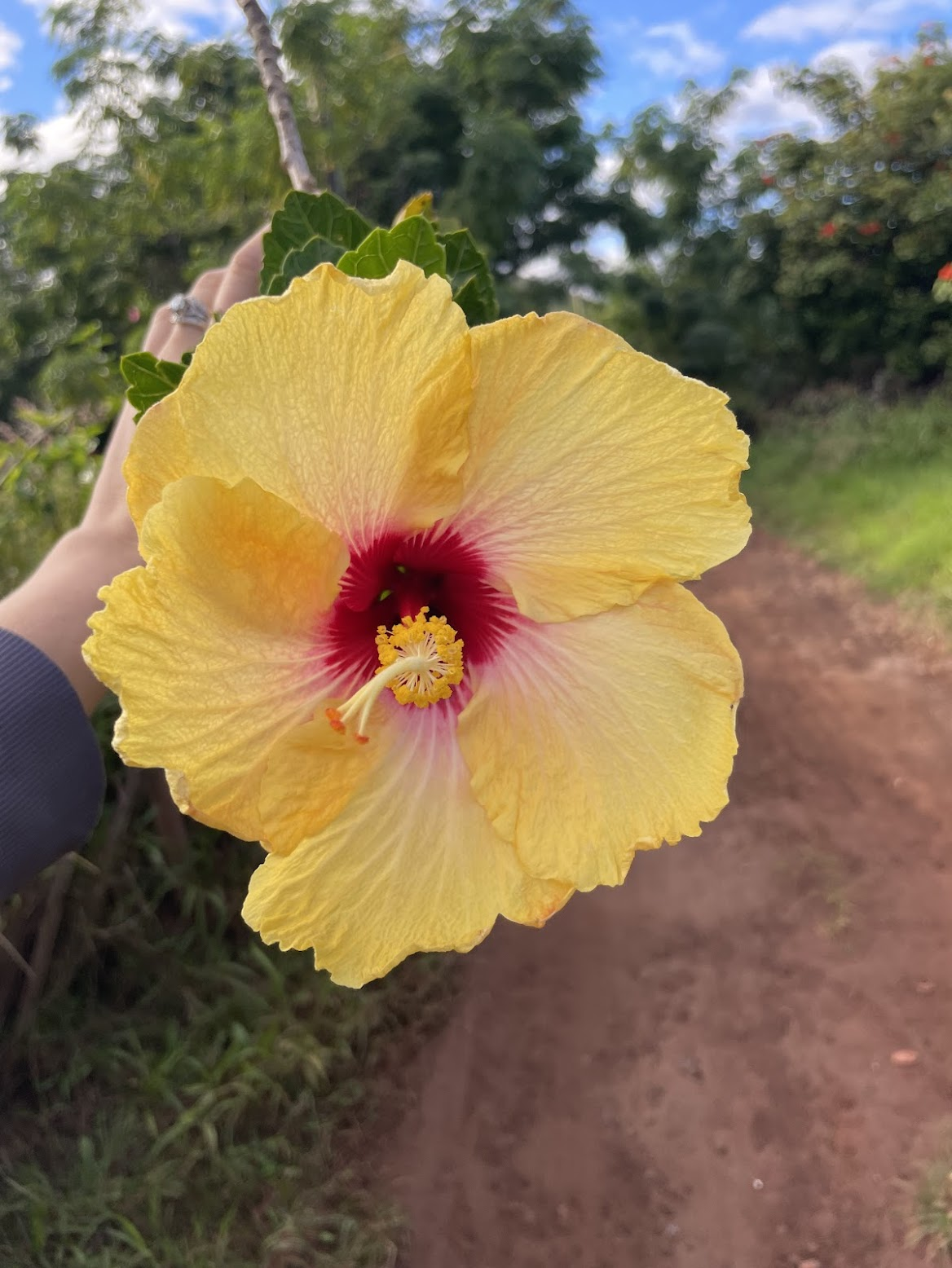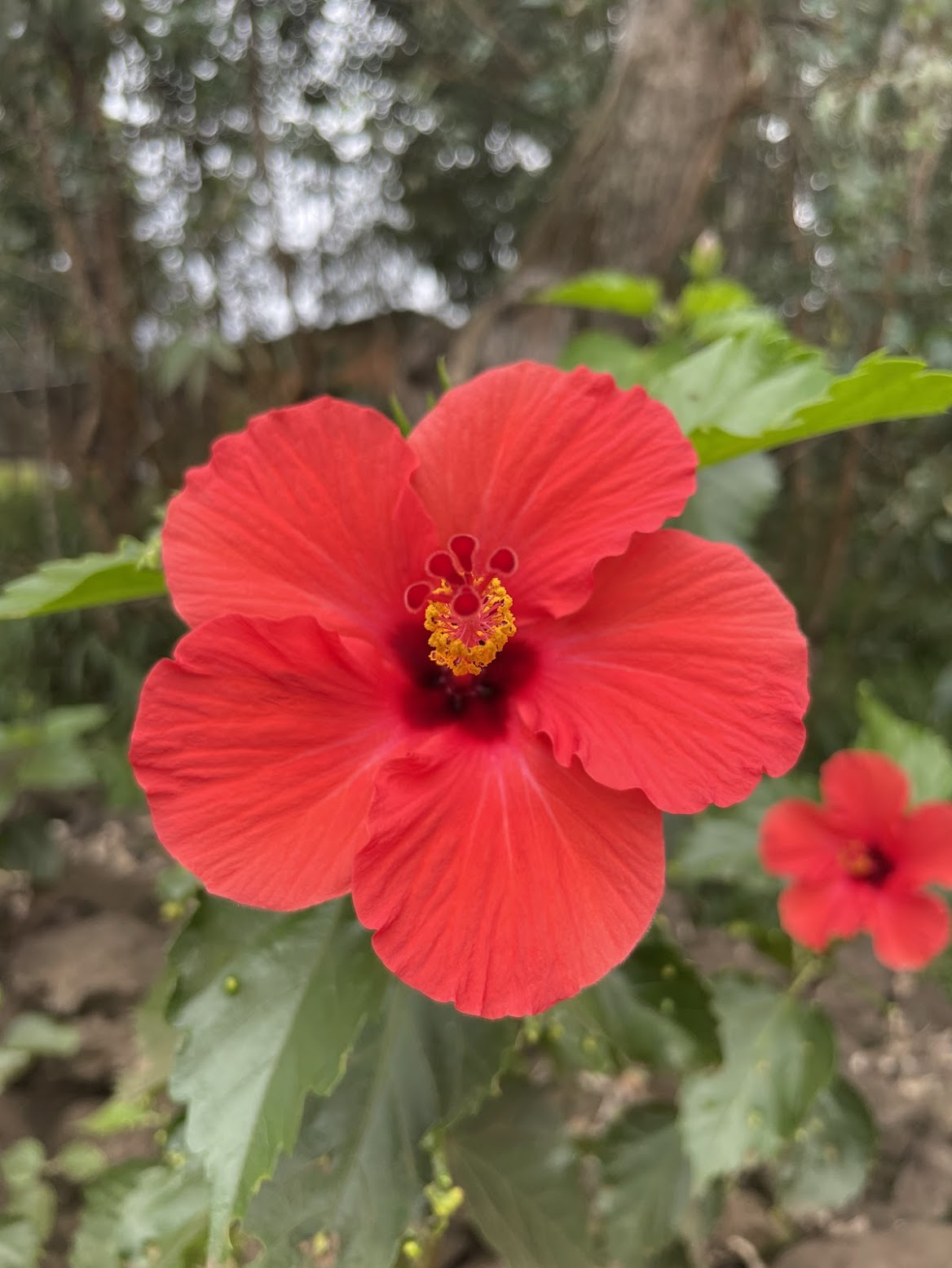One of our favorite parts of the trip was where we stayed. We rented a cabaña through Airbnb, which was located on a little farm. The house was the perfect size for us: 2beds/1bath (with a bunkbed!!). But the grounds were the best part. They had so many tropical fruit trees: guava trees, avocado trees, passion fruit vines, lemon trees, banana trees, and they also grow pineapple, but it wasn't in season. Everything else was though, and it was the best fruit I have ever tasted. Every day, the boys would go out and collect a few of each that had fallen to the ground, and we never ate better.
Lemon tree!
Apparently there are many types of avocados. Our Airbnb host had two different types growing on the farm, but in town we saw another variety shown next to boys' heads below for perspective. They were humongous!!


One night, right before bedtime, we got a knock at the door. Our Airbnb host had found a baby chick that had lost its mother, and it needed to sleep skin to skin with someone in order to survive the night. She asked if we wanted the job, and we said yes! The chick was the softest ball of fluff you ever felt and seemed lighter than the sum of its feathers somehow. Avery held him against his chest for one minute before he burst into giggles because it was too tickly. Emerson made it longer, basically 15 minutes until he was ready to fall asleep. Then I came in and got the little guy. I honestly don't know if Emerson could have slept with it all night without squishing it, but I wasn't willing to risk the little guy's life to find out. I slept with it tucked inside my sports bra for probably two hours, but then I inconveniently had a night sweat that was starting to drench the little guy and was counterproductive for the warmth he needed. So then Drew slept with him for the rest of the night. Drew has a slight indentation at his sternum, so the chick cuddled there amongst Drew's pillowy chest hair, and it seemed quite content. Only when Drew would turn over (slowly) would the chick let out a couple of cheeps, like "hey, I'm still here, don't forget about me!" Other than that, it was totally quiet, and it also didn't poop at all! So, Drew slept some, but not alot, probably the equivalent of sleeping with a newborn, an experience we have all but wiped from our memory. Luckily in the morning, we found the mother hen, and the little guy was reunited with his family.
On a separate note, Rapa Nui had some of the best empanadas we've had so far. They were huge, close to a calzone in size, and baked fresh daily. Our favorites were camarone (shrimp) y queso, machada (shredded beef), and "Neopolitano" (queso, basil, jamon).

I was also in love with all of the flowers on the island. I had never seen so many various colors of hibiscus flowers. All of these I found either on the farm or within a 5 min walk of their property.
The boys' favorite part of trip was undoubtedly playing with their neighbors, the grandsons of our Airbnb host. These two boys, Josecito and León, are technically Chilean, not Rapa Nui, and they spoke only Spanish. The boys would run from one end of the farm to the other for as long as we'd let them, with their only rules being to give the horse and bull a wide berth. They loved the freedom and the space and definitely didn't want to leave.
One rainy day, we went to an open house at the nearby Planetarium, and Drew befriended the Director, a young guy with two kids close in age to the boys, who also played chess. Another rainy day we met up with them for a playdate of lego building back at the Planetarium, and afterwards we went out for churros. What I assumed would be one basket of churros turned out to be an ice cream sunday with churros inside. Yes, it was as magical as it sounds.



















































